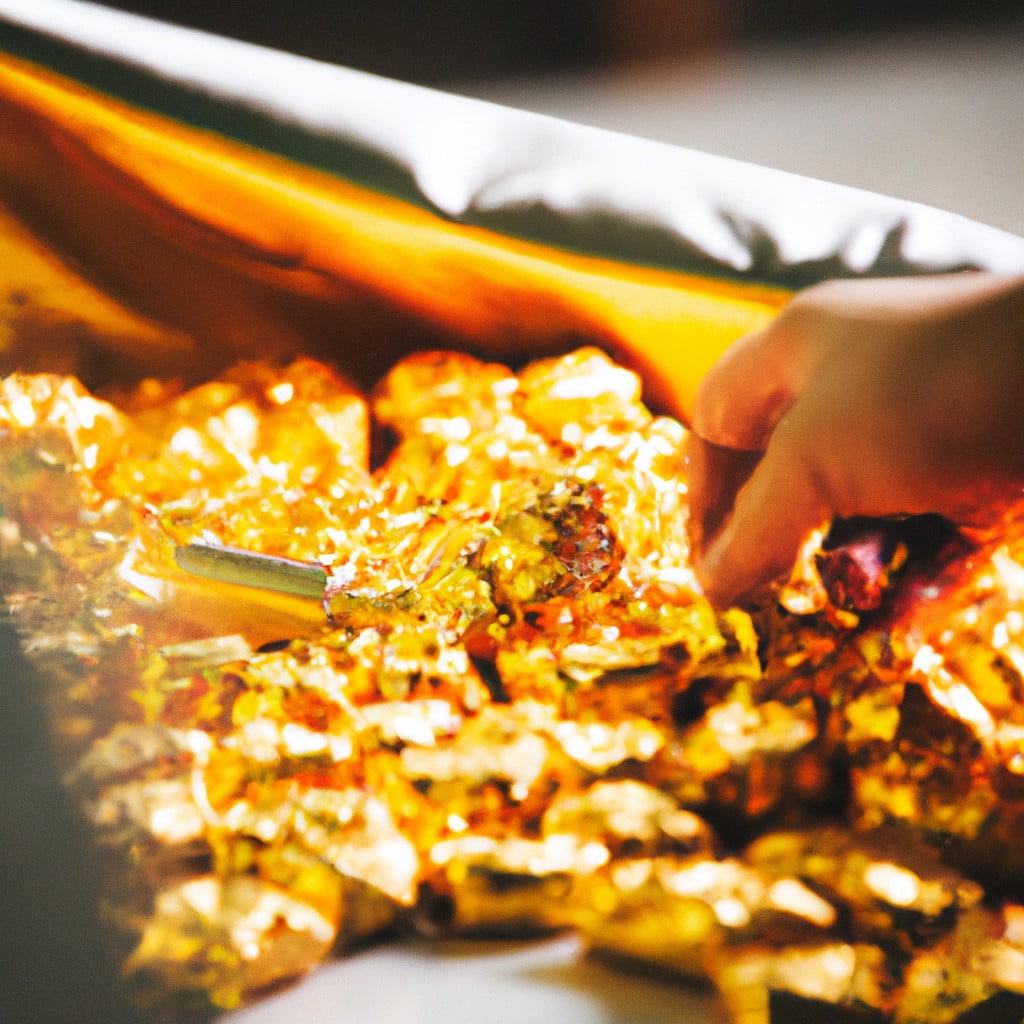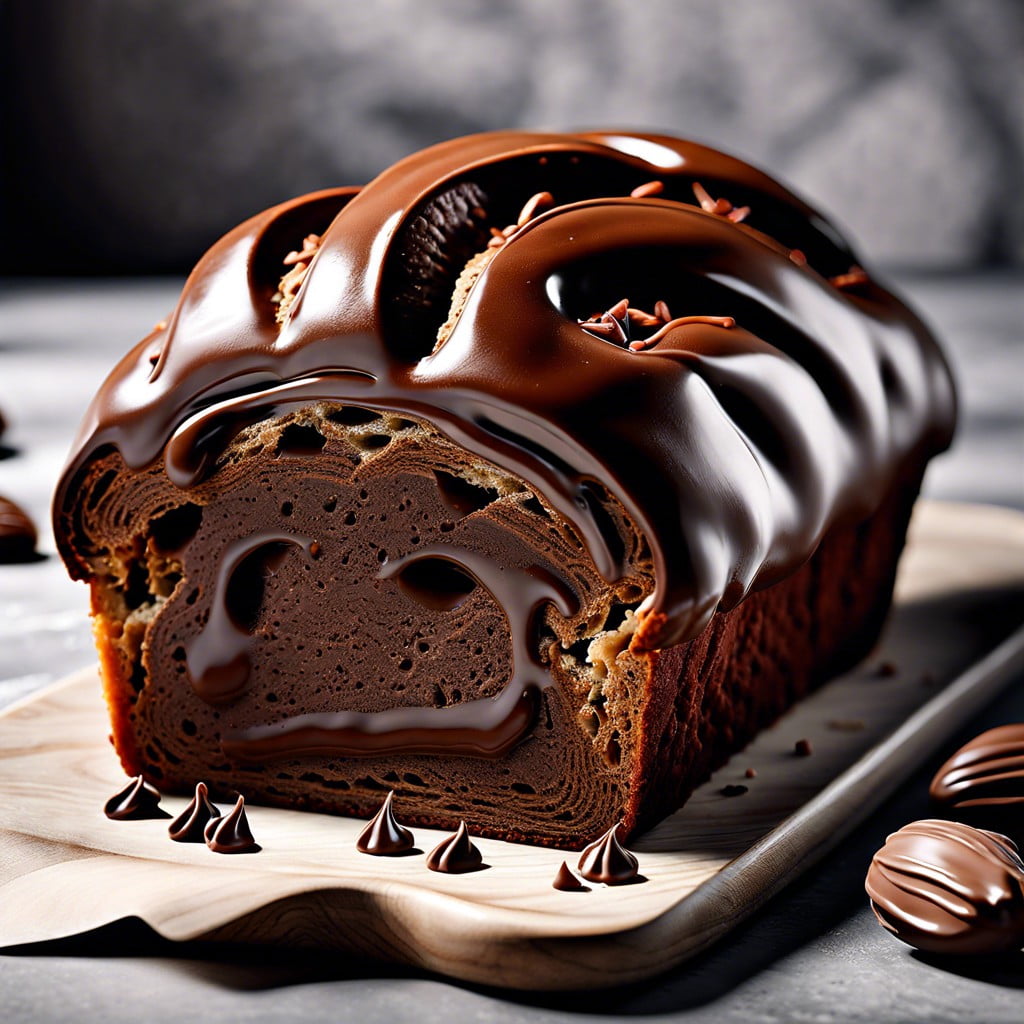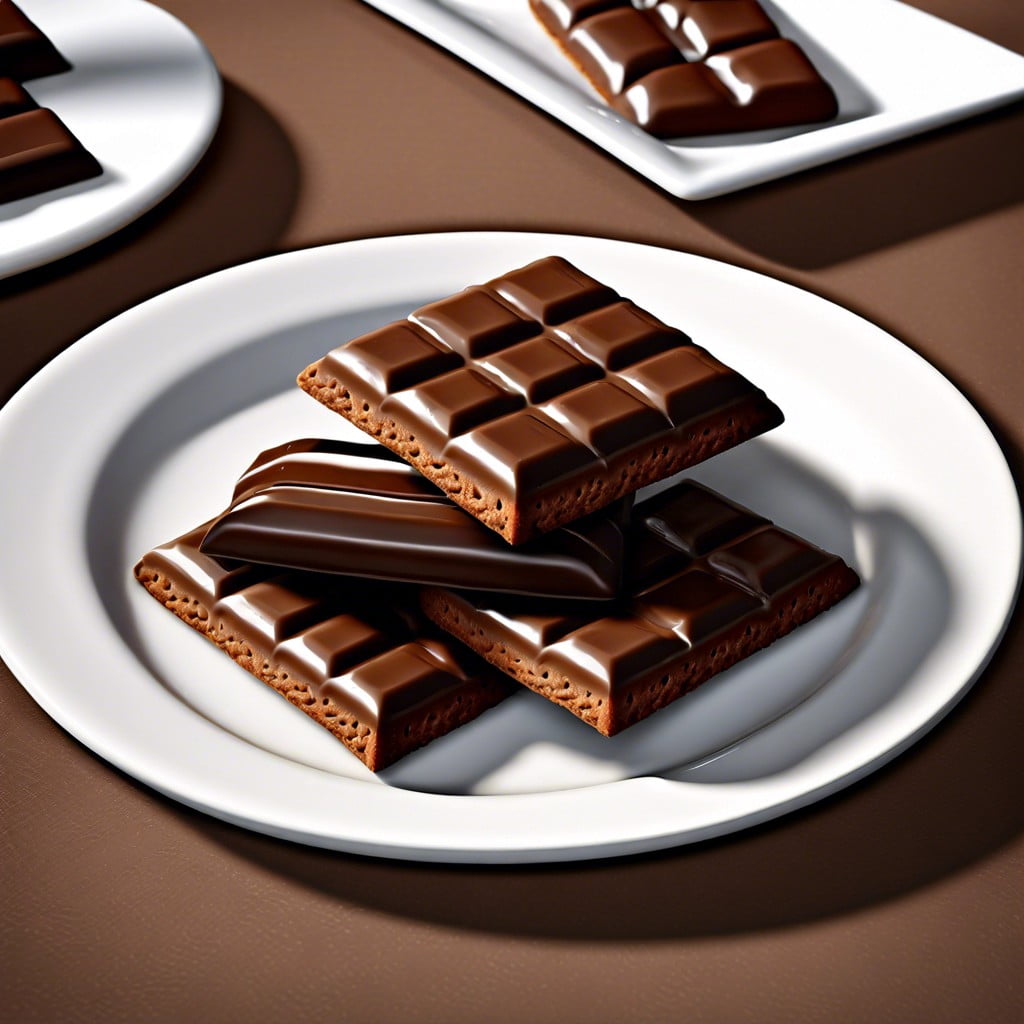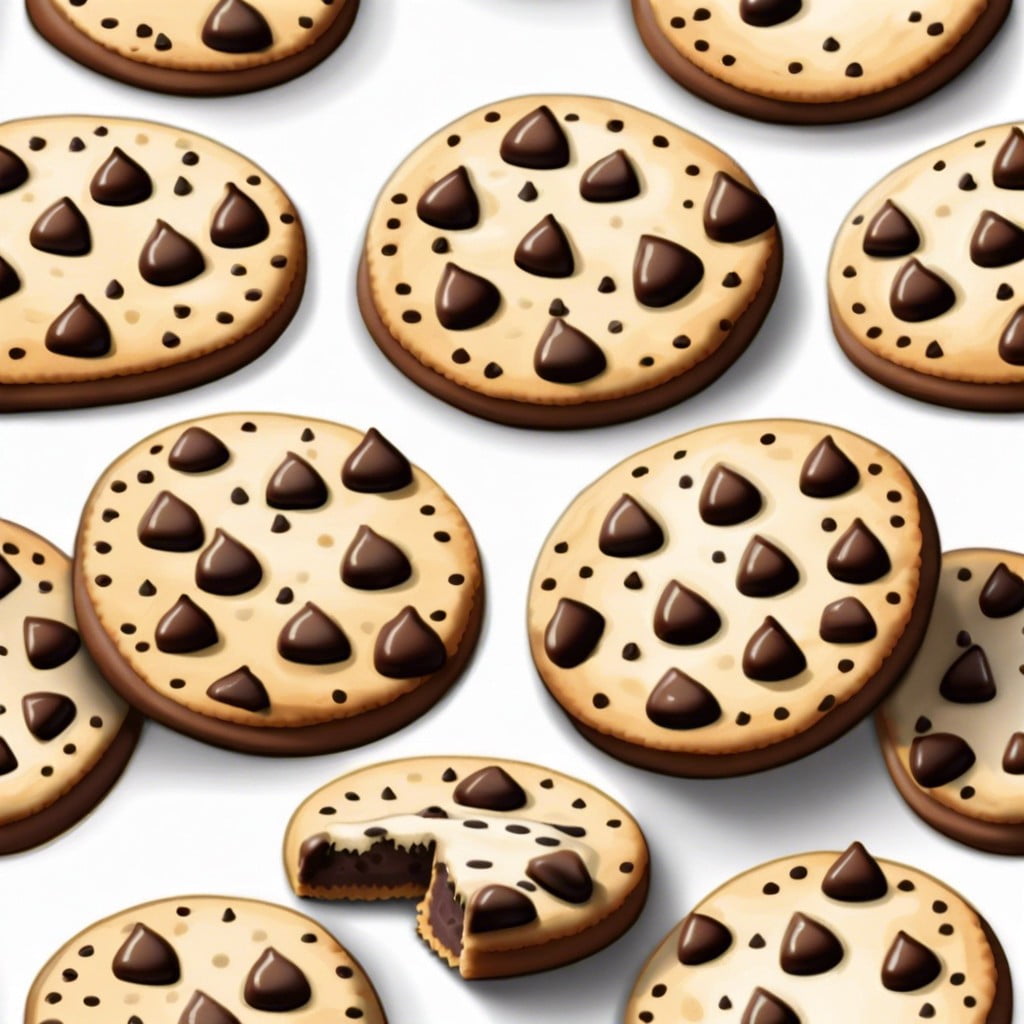Unleashing the luxurious allure of gold chocolate, this guide will take you through a detailed process to craft your own edible treasure.
Creating gold chocolate, a luxurious treat that adds a touch of elegance to any occasion, requires a simple yet meticulous process. This article will guide you through the steps of making gold chocolate, from selecting high-quality chocolate to applying the edible gold.
You’ll learn about the types of chocolate that work best, how to temper it for a glossy finish, and the safe ways to handle edible gold.
Whether you’re planning to make gold-dusted truffles or gold-coated chocolate bars, this comprehensive guide will provide you with all the details to create these golden delights.
Key takeaways:
- Opt for high-quality chocolate with at least 70% cocoa content.
- Edible gold adds a luxurious appeal without altering the flavor.
- Use the right tools, like a heatproof bowl and a food-grade paintbrush.
- Follow a step-by-step guide to melt, mold, and cool the chocolate.
- Get creative with serving and pairing gold chocolate for an exquisite experience.
Inside
Importance of Choosing High-Quality Chocolate for Gold Chocolate

To achieve the best flavor and texture, opting for high-quality chocolate is paramount. Luxury brands offering a cocoa content of at least 70% are recommended for their robust flavor and smooth texture. They usually have fewer fillers and more pure chocolate, contributing to a richer taste.
Moreover, consider dark chocolate over milk or white, as its stronger flavor complements the subtle gold aesthetically and taste-wise. This type of chocolate also melts easier and gives a smoother finish.
Finally, leave pre-packaged chocolate chips on the store shelf. They often contain less cocoa butter and more wax, leading to a less-than-ideal texture and flavor in your gold chocolate.
Remember, better input will result in better output. Consequently, investing in high-quality chocolate, despite it being a bit pricier, ensures a delightful finish to the gold chocolate that’s worth every penny.
Unique Role of Edible Gold in Gold Chocolate Recipe
At the heart of gold chocolate is, unsurprisingly, edible gold. This regal ingredient lifts an ordinary treat to extraordinary heights. Here’s the unique role it plays in gold chocolate:
- Gold undoubtedly adds a luxurious appeal. The glistening metal makes the confectionery an eye-candy, setting it apart from other chocolates.
- Edible gold has no taste on its own, so it won’t alter the flavor of premium chocolate. This truly allows the rich, sumptuous taste of high-quality chocolate to shine through.
- Applying gold to chocolate is a delicate yet rewarding process. It involves skill and precision, reflecting artistry and craftsmanship in chocolate making.
- Gold is safe for consumption, with a long history in culinary arts. Used sparingly, it transforms the commonplace into an indulgence, taking the gourmet chocolate experience to a higher plane.
- Finally, in addition to its visual appeal, gold has an enduring, fascinating essence. This gives the gold chocolate its unique, unforgettable quality.
Incorporating gold into your chocolate requires careful handling to maintain its form and properties. This step will make the difference in transforming regular chocolate into a true gourmet gold chocolate treat.
Choosing the Right Tools for Making Gold Chocolate
Having the right tools can greatly enhance the process and outcome of your gourmet creation.
A heatproof bowl is essential when melting the chocolate. It should be sturdy, with a smooth interior to prevent the chocolate from sticking.
Double boiler comes next, which is paramount for gently melting the chocolate, preserving its texture and flavor. While a microwave can be used, it gives less control over the process.
You’d also need a food-grade paintbrush. Once your chocolate has melted, you’ll utilize this tool to evenly apply the edible gold leaf pieces.
Silicone chocolate molds are what give the chocolates their shape. These molds come in various sizes and designs, just pick one according to your preference.
Lastly, a culinary thermometer might come in handy. Chocolates are quite sensitive to temperature, and this tool will ensure that your chocolate is melted to the perfect consistency.
Remember, taking the time to gather all necessary tools beforehand will make the process smoother and more enjoyable.
Step-by-Step Guide to Making Gold Chocolate At Home
First, lay out all your ingredients and tools: high-quality dark or milk chocolate, edible gold leaf, a double boiler, a chocolate mold, a brush, and a cooling rack.
Melt the chocolate in the double boiler, constantly stirring until it reaches a smooth consistency. Be mindful of the heat; chocolate can easily seize or burn.
While the chocolate melts, carefully prepare your edible gold. Using a brush, apply a thin layer of the gold leaf to the inside of your chocolate mold. This step requires attention to detail as the gold leaf is fragile and can tear easily.
Upon achieving a smooth, melted chocolate, remove from heat. Then gently pour or spoon it into your gold-lined mold. The goal is to have the chocolate coat the gold without disrupting the layer.
Transfer the filled mold to a cooling rack where it can sit undisturbed while the chocolate solidifies. The cooling process is crucial for the chocolate to develop a proper structure and texture.
Once fully set, carefully remove the chocolate from the mold. The golden layer should be visible against the hardened chocolate surface now.
Now, your homemade gold chocolate is ready to serve. Remember, chocolate making is both a science and an art, requiring patience and precision. Happy chocolate making.
Common Mistakes to Avoid When Making Gold Chocolate
First, avoid overheating the chocolate. This will not only burn the chocolate, but the excess heat will also tarnish the gold, affecting the appearance and taste. It’s best to melt the chocolate slowly on a low heat, ensuring it’s silky smooth without unnecessarily raising the temperature.
Secondly, remember not to add the gold too early. Edible gold is best added after the chocolate has been melted and started to cool. This allows it to stick to the chocolate without getting lost or damaged in the melting process.
Another common mistake is using poor-quality edible gold. The quality of the gold can significantly impact the final product. The gold should be 24 karat and approved for culinary uses to ensure it’s safe to consume and gives the desired vibrant hue.
Lastly, don’t rush the setting process. Gold chocolate needs ample time to set properly to ensure the gold adheres correctly and the chocolate’s texture isn’t compromised. Taking the time to temper chocolate helps create a glossy appearance and satisfying snap, enhancing the golden tones.
Bear these mistakes in mind and apply corrections consistently to keep your gold chocolate making results fabulously delicious and brilliantly golden each time.
Creative Ways to Serve and Present Gold Chocolate
Gold chocolates, luxurious and elegant by nature, deserve an equally resplendent presentation. It’s not just about setting them on a plate; it’s about making the experience memorable and visually stimulating.
Crafting a chocolate bouquet is a delightful strategy, especially for special occasions. Edible arrangements can involve a mix of gold chocolates and fresh fruits, arranged innovatively.
Chocolate tasting platters can also be created. These could include various types of chocolates, with gold chocolate as the star, accompanied by tasting notes for each.
For a gourmet touch, consider a wine and chocolate pairing. Gold chocolate can be matched with appropriate wines to elevate the tasting experience.
Gold chocolate can also be finely grated and used as garnish for desserts, adding a touch of grandeur and taste.
Homemade gold chocolate gift boxes offer a personalized touch. Consider packaging them attractively with a mix of gold chocolates and accompanying goodies like nuts or dried fruits.
Finally, remember gold chocolate can also be incorporated into festive desserts. Think of gold chocolate-dipped strawberries, gold chocolate mousse or gold chocolate drizzled cakes. These clever uses will not only satisfy the taste buds but also ensure your gold chocolate stands out as a truly luxurious delicacy.
Suggestions for Pairings and Tastings With Gold Chocolate
Gold chocolate, with its rich and luxurious flavor, pairs beautifully with a variety of foods, beverages, and spirits.
– Fine wines, particularly Merlot and Pinot Noir, complement the golden chocolate’s smooth texture and deep, complex flavor. These wines also have fruit-forward aromas that meld wonderfully with the richness of the chocolate.
– For spirit enthusiasts, bourbon or dark rum makes an excellent pairing. These spirits bring forth the warm, caramel notes inherent in the gold chocolate, enhancing the overall taste.
– Nuts like almonds, cashews, and hazelnuts serve as perfect companions due to their mild flavor profile and crunchy texture, creating a delightful contrast with the smoothness of the chocolate.
– Pairing gold chocolate with dried fruits like figs, dates, and apricots can help balance the rich flavors, providing a touch of tartness and a different texture.
– Certain cheeses, such as brie or mildly sharp cheddar, captivate with their creamy texture and complement the chocolate’s richness.
– A cup of dark roast coffee or an espresso shot offers an enticing pairing and allows you to experience the chocolate’s subtleties distinctly.
Remember, tasting gold chocolate is a subjective experience and these suggestions are just a starting point. Feel free to experiment and find your own perfect pairings.
FAQ
How is gold chocolate made?
Gold chocolate is made by Belgian chocolatiers who incorporate caramelised sugar and milk into the chocolate to give it a naturally golden color.
What two colors make gold chocolate?
The two colors that combine to make gold chocolate are warm yellow and warm brown.
What is the origin and history of gold chocolate?
Gold chocolate, also known as blond chocolate, was invented by Valrhona, a French chocolate company, in 2012 when a pastry chef accidentally over-roasted white chocolate, resulting in a caramelized, dulce de leche-like flavor.
How does the taste of gold chocolate differ from other types?
Gold chocolate offers a unique, caramelized taste that distinguishes it from other chocolate types.
What are some creative serving suggestions for gold chocolate?
Gold chocolate can be creatively served as part of a luxurious dessert platter, melted and drizzled over fresh strawberries, or finely grated atop a frothy cappuccino.




